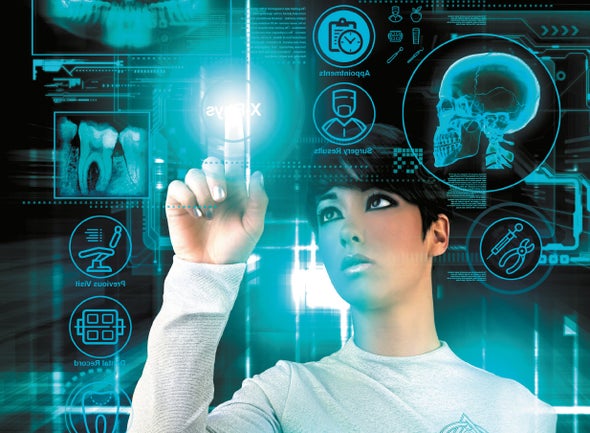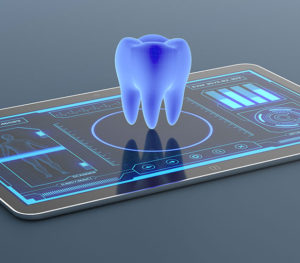
Oral health and dentist appointments are not an indulgence but a basic requirement. Therefore there is a necessity for a systemic change, and AI Artificial Intelligence in dentistry seems to be a viable solution at this time and as we move forward. That’s to not say that machine learning will substitute human intelligence and skill. On the contrary, the simplest AI systems have to incorporate human presence to find out from them and work successfully.
So how is Artificial Intelligence AI in dentistry breaking obstacles in the domain today?
A current WHO publication offered a profound understanding of how dental maladies influence most developed countries. the research observes how most systemic diseases usually reflect through a change in oral health. this implies that correct identification of oral health can eventually help prevent other serious diseases or find early cures.
That said, not everyone can afford an everyday dental checkup. The difficult financial times mean more people will likely contribute fewer resources to dental checkups. Combine this with urgent health needs and unavailable geographic locations, and you have got yourself a full population of ‘orally stigmatized individuals.’ Furthermore, a decent number of individuals are uneducated when it involves oral health. But whether or not more people would afford a daily checkup, the number of dentists would still not fully accommodate the need.
We now have self-monitoring mobile applications like smilo.ai that seek to satisfy the demand and ease the dental health care provider shortages. The app allows patients to require photos of the mouths and gums then scans the photographs for gum disease or any dental decay. This information is then accessible to both the patient as well as the healthcare provider. This not only allows for earlier detection but is now also increases the attention of dental health issues to the masses.
The potential in teledentistry is growing exponentially, and that we can only hold our breath to work out what the longer term holds.
Early Detection of Diseases
To understand AI’s potential in dentistry, we are going to have a look at two applications of computer science in oral health. Called (CNNs) convolutional neural networks and artificial (ANNs). neural networks ANNs are available handy when recognizing patterns in an exceedingly given data set. These neural networks then gradually educate the machine to acknowledge the patterns creating future recall more reliable than human memory, which is liable to forget.
On the other hand, CNNs are the neural links utilized in image diagnostics. These neural networks’ full capacity has not yet been entirely accomplished, since AI remains in its infancy. Nonetheless, ANNs and CNNs are currently wont to detect periodontal diseases and cavities.
This technology eradicates or minimizes errors in diagnostic capabilities among clinicians and touch, which frequently vary from one dentist to a different. this suggests more detailed and unbiased assessments of the patient, thus better diagnosis.
With the applying of linguistic communication processing (NLP) – just like Alexa in Amazon – dentists can now issue commands through voice-activated systems to the machine for various tasks. NLP is often wont to expose digital radiographs allowing the clinician to capture and compare images hands-free. This translates to optimized infection control protocols also as less time for patients on the chair.
Deep Learning for Heightened Accuracy
Deep learning involves identifying complex patterns in massive amounts of information – image and speech recognition would be a viable example. because the Internet of Things becomes a reality across different sectors, we see the event of intelligent hardware that maximizes deep learning to supply a more accurate diagnosis of diseases. for example, ten private dental clinics propose using the MASK R-CNN trained automatic diagnosis model to spot and classify seven different oral diseases.
Moreover, there’s now a rise of 18.4% of treated patients within the US thanks to mobile terminals for clients and dentists. These platforms allow patients to schedule appointments, consultations, and supply services of pre-examination and evaluation. This study shows that this has reduced the typical screening and diagnosis time by 37.5% for every patient. AI plays a vital part in informing patients and dentists of forthcoming examinations or obligatory visits each time there’s a lifestyle transformation, managing insurance and paperwork, and delivering signals about any new allergies.
Amalgamation, Processing, and Analysis of Medical Data
Generally, after we consider AI, we usually formulate the ideological reasonably super AI displayed in movies – that’s, artificial general intelligence (AGI.) this can be the type of AI that pops in our head – the kind that machines that fully match up or exceed human intelligence. With all the innovations in AI, we are far from getting there. the identical may be said in machine learning and dentistry.
For it to figure seamlessly, the machines will need heaps of data that patients must willingly provide. With proper data management skills, AI will even predict new threats in dental hygiene, like the Event 201 Scenario.
Once various and diverse information fields are incorporated, AI will allow more trials and improvements. the following few years may witness cleaned, curated, and structured data if AI manages to gather and process oral health data ubiquitously. Such data will enable patient monitoring to be a life-long phenomenon instead of a ‘few-minute-checkup’ scheme, as is that the case within the traditional setup.
The Financial Aspect of AI in Dentistry
Outside the operation room and dentists’ chairs, computer science comes in handy in marketing and communicating with patients. AI be will able to currently utilize in-built systems to introduce great marketing operations. More often than not, this needs data processing to spot the perfect time for such marketing campaigns. As soon as the new patients are identified, the AI will use its set of rules to identify cancellations, examine existing appointments, also as follow the growth of the marketing.
Several obstacles may inhibit us from completely enhancing the capabilities of AI in dentistry. one amongst them is that the financial impediment within the development and production of the latest technology. Nonetheless, some dental companies are breaching the gap and seizing the challenge to incorporate AI in dentistry.

Follow Dr. Pascal Terjanian’s blog and social media to keep up with all the latest dental news and trends.


